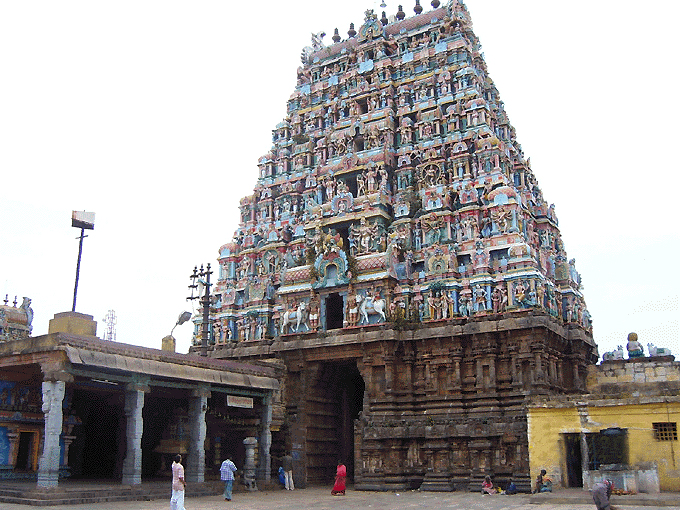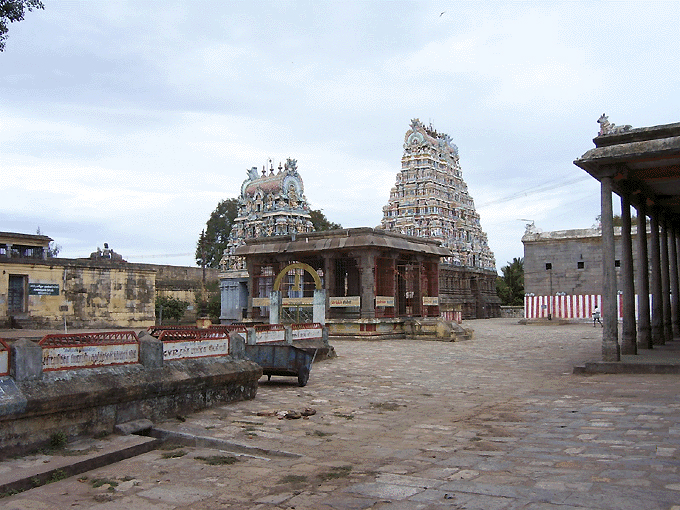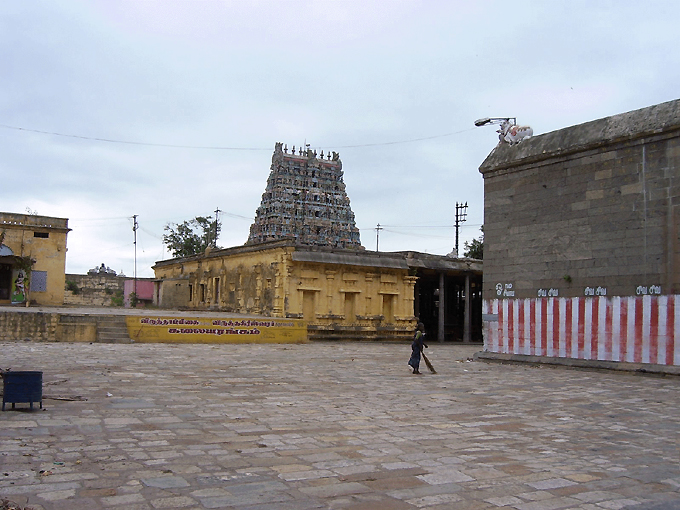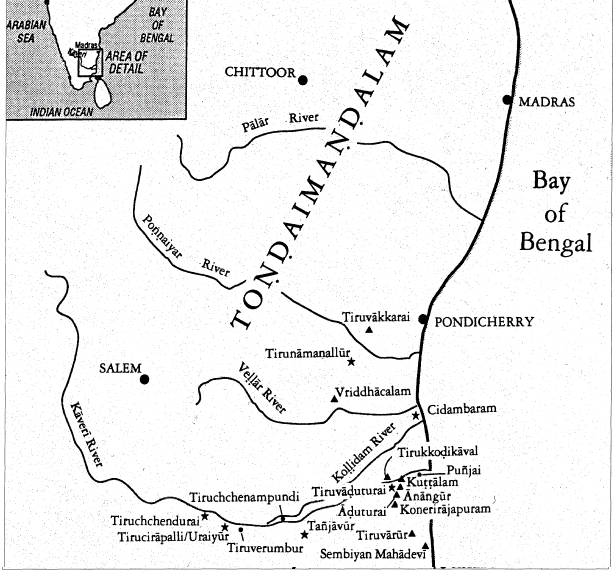
Vriddhakasi
Vriddhakasi and the temple of Lord Shiva.

Vriddhacalam tirtha:
Vriddhakasi's present name is Vriddhacalam. It is situated in the Cuddalore district on the bank of the river Manimukha.

In the case of Vriddhakasi, we have ample evidence in sastra for the location of the tirtha, and the place is easily found on modern maps. There are a number of variations in spelling for this tirtha: Vrddhakasi (Vrddha-kasi), Vriddhakasi (Vriddha-kasi), Vrddhacalam (Vrdha-calam), and Vriddhacalam (Vriddha-calam).
Being located in Tamil Nadu, it is known locally by the Tamil name, Thirumudukundram.
Virudhachalam is a municipality and taluk headquartered in Cuddalore district of Tamil Nadu. The name 'Vriddhachalam' is derived from the Sanskrit vriddham, which means 'ancient', and achalam, or 'mountain'. Likewise, the Tamil name 'Thirumudhukundram' means 'old mountain'.
The Manimukha River (also known as the Manimuthar) that flows through Vrddhakasi in the Southern Arcot district is now commonly known as the Vellar River. The Vellar originates in the Shevaroy Hills and runs through the districts of Salem, Perambalur and Cuddalore in the northern part of Tamil Nadu, then flows into the Bay of Bengal near Parangipettai.
The Shiva Temple at Viddhakasi
Today there are a few Shiva temples in the area of Viddhakasi. In fact, the village is surrounded on all four sides by temples. One of the Shiva temples, the Kolanjiapper Temple, is only about 200 years old. It is well known today for its Murugan worship.
The very ancient temple that Lord Caitanya visited is the Thirumudukundram Temple, also known as the Sri Vridhagiriswarar Temple after its presiding Deity, Vridhagiriswar Shiva. It is also called the Palamalai Nadhar Temple, and it is one of the oldest in Tamil Nadu. Palamalai Nadhar, another name for Lord Shiva, is associated with the story of the devotee Sundarar, who received 12,000 gold coins from Lord Palamalainathar. The quality of the gold was checked by Matru Uraitha Vinayakar (Ganesh), then the coins were thrown into the river. They were collected again from the water at Kamalalayam, Tiruvarur. Sri Vinayakar again checked the quality of the gold coins at Tiruvarur. This pastime is sung by Dikshitar, Sri Mahaganapatiravathumam in Gowlai.

The location of Vriddhagirisvara Temple, shown on the map above, has Vriddhacalam marked by a triangle. The triangles designate villages in which Sembiyan Mahadevi, a well known patron, had various temples built. Numerous other temple constructions including towers, mandapas (pavilions) and prakaras (compounds), were raised in Vriddhacalam by the Vijayanagar Viceroy, Chevvappa Nayaka.
The Vriddhagirisvara Temple has five praharams (interior walkways), five dwajasthambams (poles), Azhathu Pillayar (Ganesh murtis), 2 Ambals (Devi deities), and 2 Utavars (processional deities). Today, devotees still throng to Vriddhagirisvara Temple to take bath in the sacred Manimukha (Manimukthar) River. They also come here on the occasion of the Masi Magam festival.
Shiva temple (Vriddhagirisvara Temple at Viddhakasi)


No comments:
Post a Comment